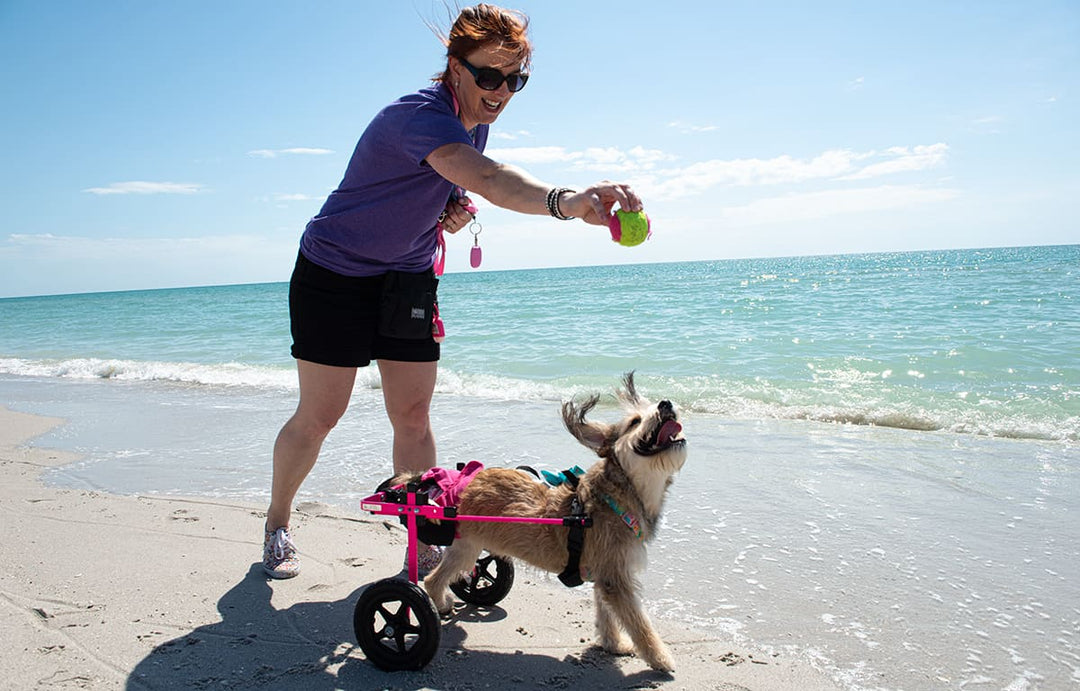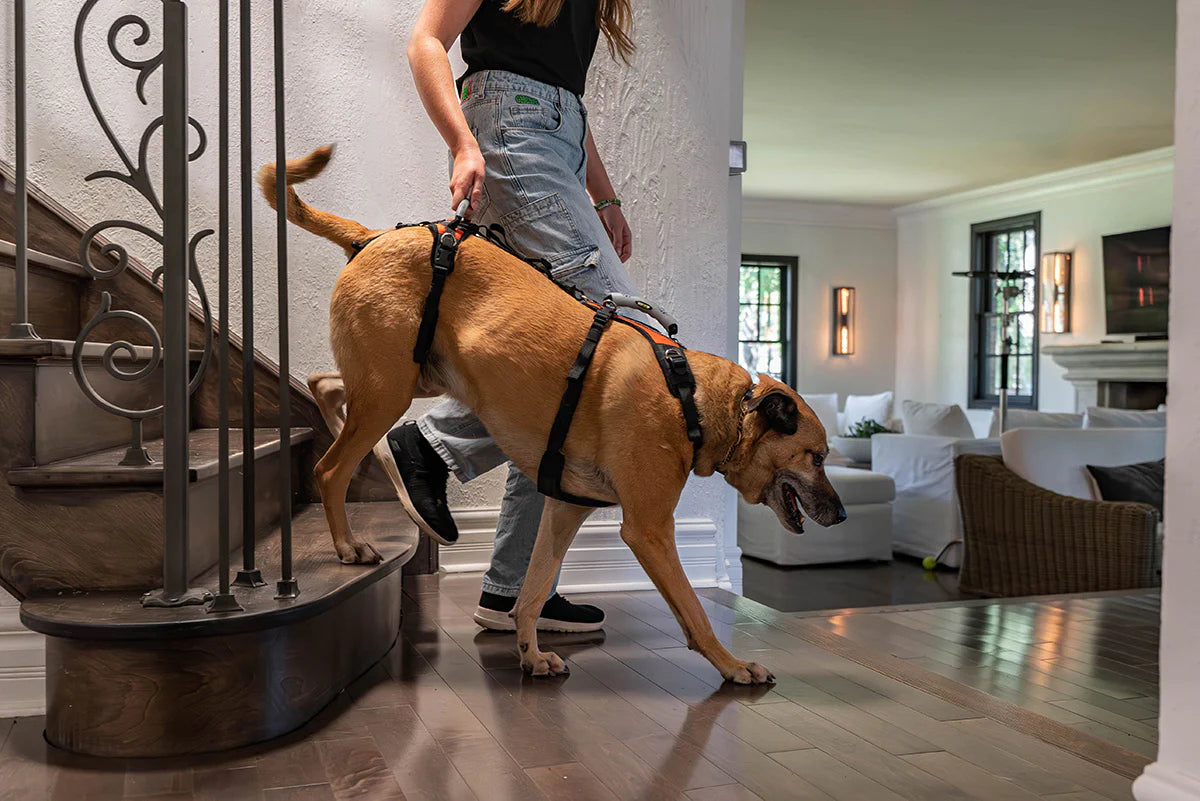7 Tips for Keeping Your Disabled Dog Happy and Healthy

If you have a disabled pet, you’ve probably spent hours Googling different versions of “How to help disabled dog.” Caring for a dog with disabilities like blindness or missing limbs is never an easy road, but the right habits can help your dog stay happy and healthy for years to come. And you likely don’t have to confine your pup to the indoors, either.
It’s still very possible to travel with your disabled pup by your side, or get him moving and enjoying the outdoors again! As always, your first stop should be your local veterinarian for a diagnosis and an ongoing treatment plan. Depending on your dog’s health condition, your pup might need different kinds of veterinary care or medications to keep him comfortable.
But there are things that you can do as well to make your dog happy and maintain a certain level of comfort. Here are some tips and tricks for keeping your disabled dog well.
Evaluate Quality of Life
Happiness is hard to quantify, but it plays a key role in determining quality of life. If your disabled dog is still eating, showing interest in things, and engaging with you, she can likely still lead a healthy life.
It’s when she becomes disinterested, lethargic, and unresponsive that difficult decisions must be made. But until then, keep an eye on her daily activity and pain levels. Having a good grasp of her unique needs and behaviors will go a long way in helping you make small changes that drastically improve her quality of life. And if anything changes, take a trip to the vet to check on your dog’s condition.
Invest in a Dog Wheelchair or Dog Harness
Canines experiencing limb weakness or paralysis are dealing with limited mobility. Depending on the exact diagnosis, a dog may lose her ability to move entirely. This loss of motion could result in depression, lack of appetite, and any number of behaviors that will severely affect her quality of life.
The good news is that many physically disabled dogs can get back on their feet with the help of a mobility aid. If your canine companion is dealing with limb weakness, a dog harness can make it much easier to help him get up stairs or into the car.
And if your dog would benefit from a little more help moving around, a wheelchair for back legs or a full support cart could be exactly what your pup needs to reclaim his independence.
Exercise Together
Disabled dogs still need exercise. Many of them want to frolic and play but aren’t able to, whether because of an illness like degenerative myelopathy or a birth defect—so you’ll just have to find an activity that works for them.
For a dog with limited mobility, that might mean taking a much shorter walk or even checking out a dog swimming pool. Whatever type of exercise you choose, make sure that your dog is comfortably able to accomplish it and seems to enjoy the activity.
Maintain Hygiene
You might have some experience with brushing your dog’s teeth, but a disabled dog will likely require more help with hygiene. If your pup is too stiff or otherwise unable to clean himself, for example, you might trim long fur that could become soiled. (If you’re not up to the task, make an appointment with a professional dog groomer!)
And don’t underestimate the benefits of a good brushing—not only will it collect that loose hair that would otherwise carpet your floors, but it will also keep knots and mats from developing, ensuring your dog’s coat stays shiny and healthy.
Do a Daily Check
Disabled dogs may lose feeling in paralyzed limbs and will not feel pain when injured there. That means that your canine companion won’t be whining or limping to clue you in to the fact that she’s hurt. Check your dog at least once a day for any injuries. A daily check is a good idea for dogs with other disabilities, as well.
If your dog goes blind, for instance, she may have trouble navigating a home that was once familiar. She may also lose track of her food and water bowls. Stick close by her until you see her adapting to her lack of sight, and make sure she’s able to find her meals to get the nutrition she needs.
Adapt Training to the Disability
They say even old dogs can learn new tricks—and we say that disabled dogs can, too! In fact, training can be an enriching activity that keeps your pup engaged and happy. But you’ll most likely have to alter your training to fit his unique needs.
If your dog is losing hearing, for example, this is a great time to begin to teach or solidify hand signals. And if a dog is having trouble getting used to his new dog wheelchair, spend some time praising him and helping him get used to the idea of moving around on wheels.








